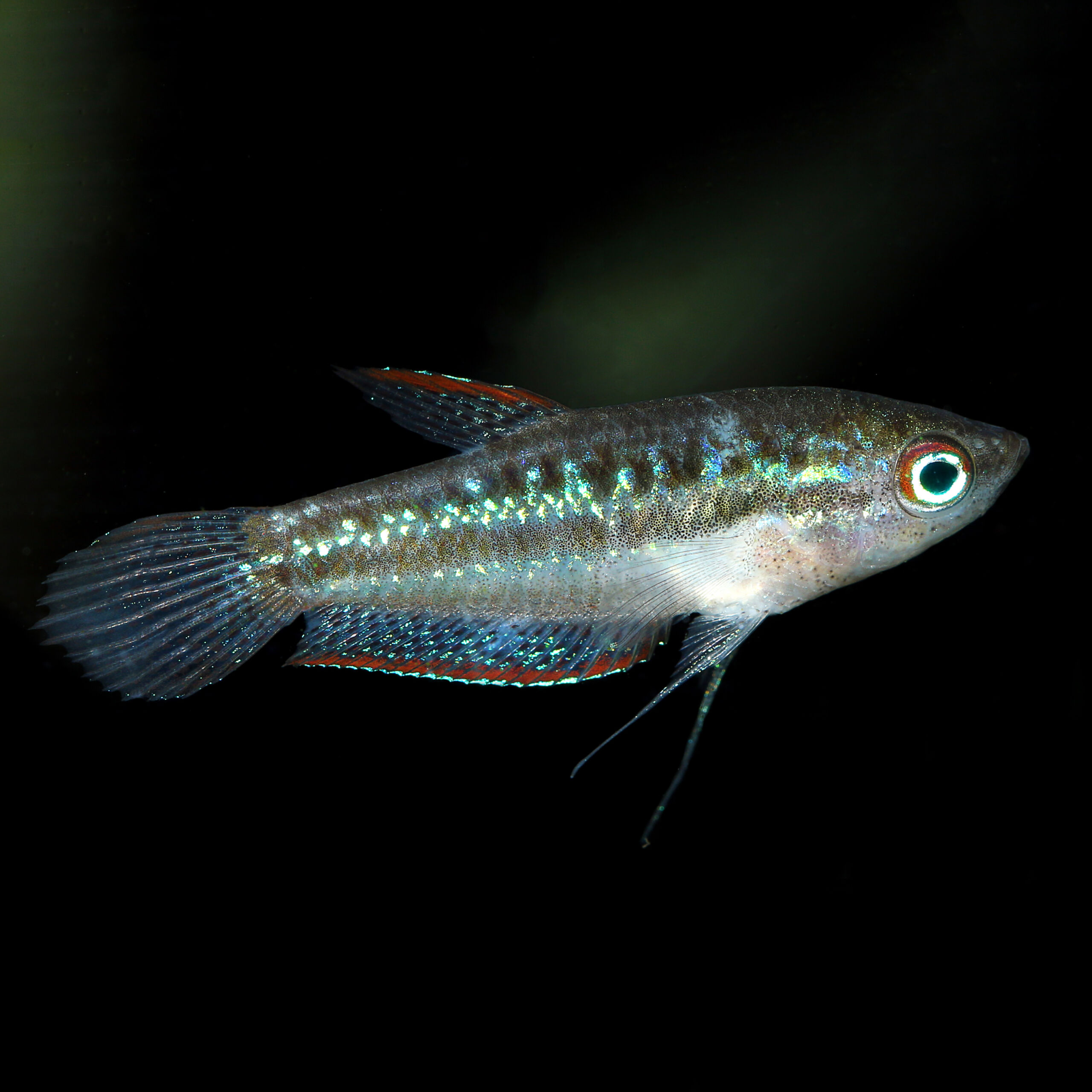Sparkling Gourami
Trichopsis pumila
The Sparkling Gourami is an extremely pretty and interesting nanofish that shimmers blue to greenish and “growls” especially during courtship.
- beautifully iridescent luminous dots
- occasionally makes “growling” sounds
- bubble nest builder
1 in stock
 Delivery in a few working days
Delivery in a few working days
 Free shipping from €60 across Austria
Free shipping from €60 across Austria





Important data
Product description & details
The origin of the Sparkling Gourami, also known as Pygmy Gourami, stretches from Vietnam through Malaysia to Thailand, where it is found in stagnant to slow-flowing, densely vegetated waters. Trichopsis pumila belongs to the labyrinth fish and thus has a so-called labyrinth organ with which it can breathe atmospheric air. In nature, this helps it to survive in the often oxygen-poor waters. This fish can reach a size of up to 4 cm and shimmers in metallic blues, greens and golds in the light. An interesting characteristic of this animal is the “croaking” sound, which it produces during courtship and display.
Care in the aquarium
Dense planting is a prerequisite for the well-being of the fish. In the aquarium, the Sparkling Gourami should always be kept at least in pairs or, better, in small groups. In this way, the social behavior typical of the species is best demonstrated. Socialization with other peaceful, not too big fish should not be a problem. Sumatran barbs are not suitable for this, though, as they could nibble on the fins of the Trichopsis pumila. This fish feels particularly comfortable in water that is as clean and unpolluted as possible, which is why the water should be changed regularly and the tank should not be overcrowded. Dense planting and floating plants ensure retreat and safety. Please ensure that the Sparkling Gourami can still easily reach the surface of the water to breathe and that the outside temperature is not much colder than the water temperature so it doesn’t catch a cold. Therefore, in a cooler apartment, a cover can be advisable or even necessary. When keeping them, it is also important to have a rather weak current or areas in the tank with little current, since a current that is too strong is not well tolerated and the bubble nest built during courtship can also be destroyed.
Feeding
In nature, the Sparkling Gourami feeds primarily on small aquatic insects and zooplankton. Small frozen and live food are popular in the aquarium, but feeding with flake food is also possible. A diet that is as varied as possible is ideal.
Sexual Characteristics and Breeding
The male differs little or not at all from the female in terms of colour, but has more pointed fins than the female, in which the fins are more rounded. If you look at the fish against the light, you can see the ovaries in the females behind the round sac, which is why the dark outline has a triangular shape tapering backwards. In order to increase the willingness of the Sparling Gouramis to mate, the water level can be lowered (ideally to about 20cm) and the water temperature increased to about 27°C. Feeding more live food additionally stimulates the fish. Like most labyrinth fish, the Sparkling Gourami builds a bubble nest, not only on the water surface, but also in the lower aquarium area, such as on the underside of the leaves of large-leaved plants. The eggs are transported to this nest after fertilization and the male takes care of the brood until the young hatch after 1-2 days. In order to significantly increase the offspring’s chance of survival, after 3-4 days at the latest, when the young fish are swimming freely, they should be transferred to a separate rearing tank and fed with very small food such as infusoria or powdered food.





